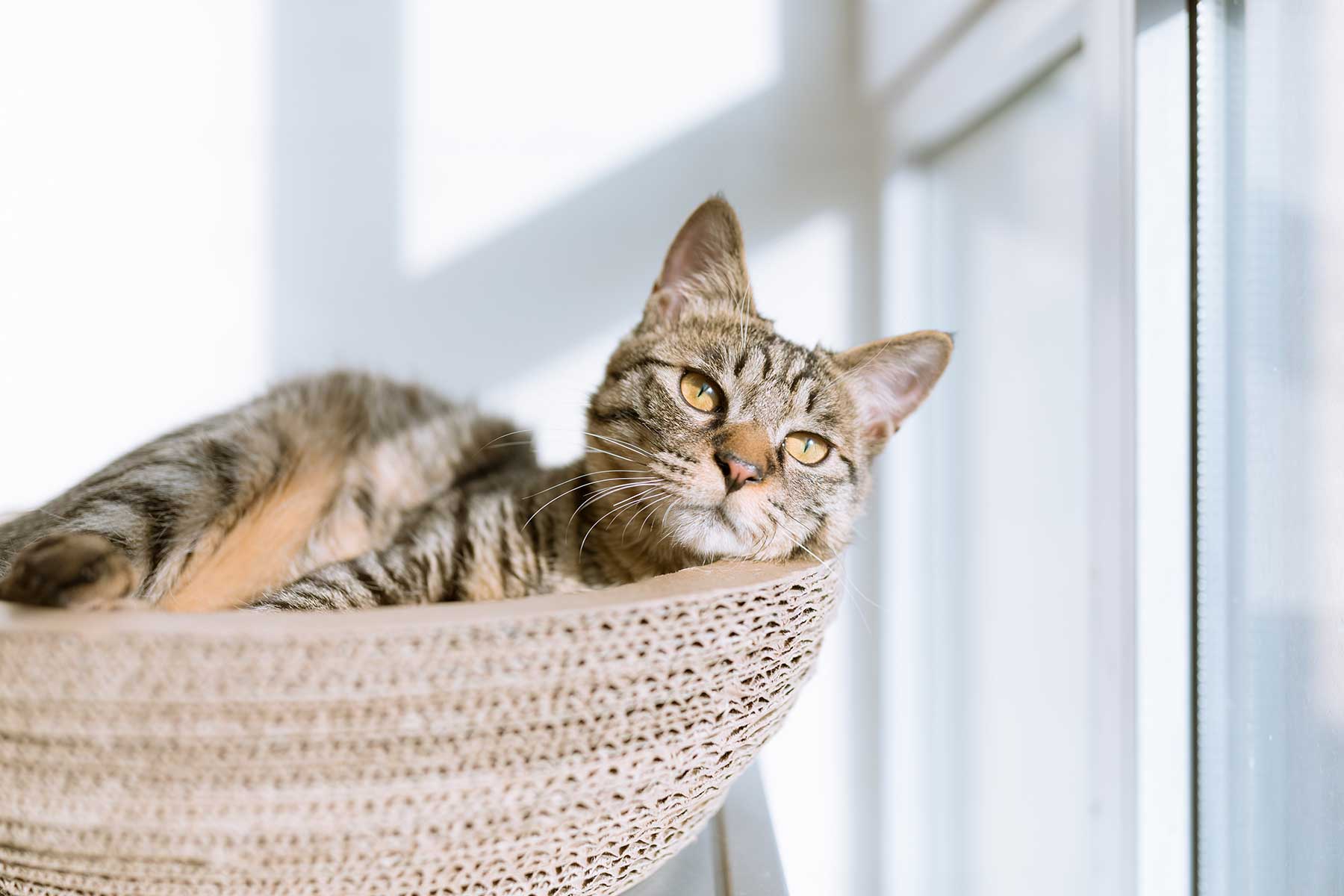Cats are one of the most popular pets kept as companions in Australia and NZ. They are beautiful, graceful, affectionate, but above all, highly complicated! Many people choose to keep their cats indoor to protect them from fighting, to decrease risk of injury, and to protect them from infectious disease. However, the challenge of keeping a cat indoor is to ensure they receive the environmental stimulation they need to avoid getting bored.
Cats have a need to exhibit hunting behaviour, to play and to explore. They must feel in control of what they are doing and, when necessary, be able to find a place where they can retreat and hide. A consistent daily routine is very important, and while it is not difficult to develop a plan to satisfy their behavioural needs, it can be time consuming to commit to a routine.
tips and tricks to help you keep your indoor cat stimulated
Play time
Cat owners should dedicate two periods of 10 minutes a day to playing with their cat. A variety of toys are needed, with different textures, colours and shapes. Playtime can include throwing your cat’s toys for them or using a cat teaser wand to get them moving. There are a range of fantastic toys that you can purchase, that helps your cat stalk, chase and even kick. Using different toys each time you play can also help motivate your cat. This is a great way to get your furry friend using their natural instincts in a safe environment!
Climb, hide, play and scratch
Cat aerobic centres and mazes can be wonderful items to keep your cat active when you are not home. These centres have multiple levels for climbing as well as areas designed for play and hiding. As they come in a range of sizes and shapes, you can find the perfect one for your cat and the environment you live in. You can also make your own mazes with card board boxes and tubes. Remember, you will need to change this regularly!
Who could forget a scratching post? This is a necessity for all cats, especially indoor cats. Scratching is a natural instinct for our furry friends and it is very important that your cat can do this regularly. This also protects your carpets and furniture from any possible damage. You can use catnip spray or powder on these areas to encourage use.
Hunting
The feline desire to hunt is natural and instinctive. Regardless of how much food you feed them, your cat will always react to sight and sound of prey with a stalk. If something moves rapidly or squeaks with a high pitch noise, this will automatically trigger a reaction. You can purchase toys that imitate real prey through size, texture, colour and sound. This helps to fulfil the social and natural needs that are essential to our furry family members.
Make food time fun
While cats do not find any benefit in specific meal times, fun puzzle feeders or feeder toys can be a great way to keep portion sizes in control and maintain a happy furry friend. It is beneficial to make your cat work for their food through these toys or by scattering food bowels around the house for them to find. You can even create your own puzzle feeder by cutting holes in an old plastic bottle. By making the holes a little bigger than the diameter of their dry food, your cat will enjoy playing with the bottle to make their food come out.
Getting some fresh air
For the owners who like to offer their cat some time outside, there are the lead and harness options. However, it can be difficult for cats to enjoy or learn to walk on a lead. It is best to introduce this type of walking early on when they are kittens so that they can get used to this approach. You can also purchase outdoor cat enclosures, ideally a pen, that keeps them outdoors and safe.
These are only some of the ways you can keep your furry family member active and happy whilst staying indoors. If you notice a change in your cat or they are struggling with the transition from outdoors to being inside, please contact us. We can provide behavioural assistance and advice to help your cat enjoy life indoors.



